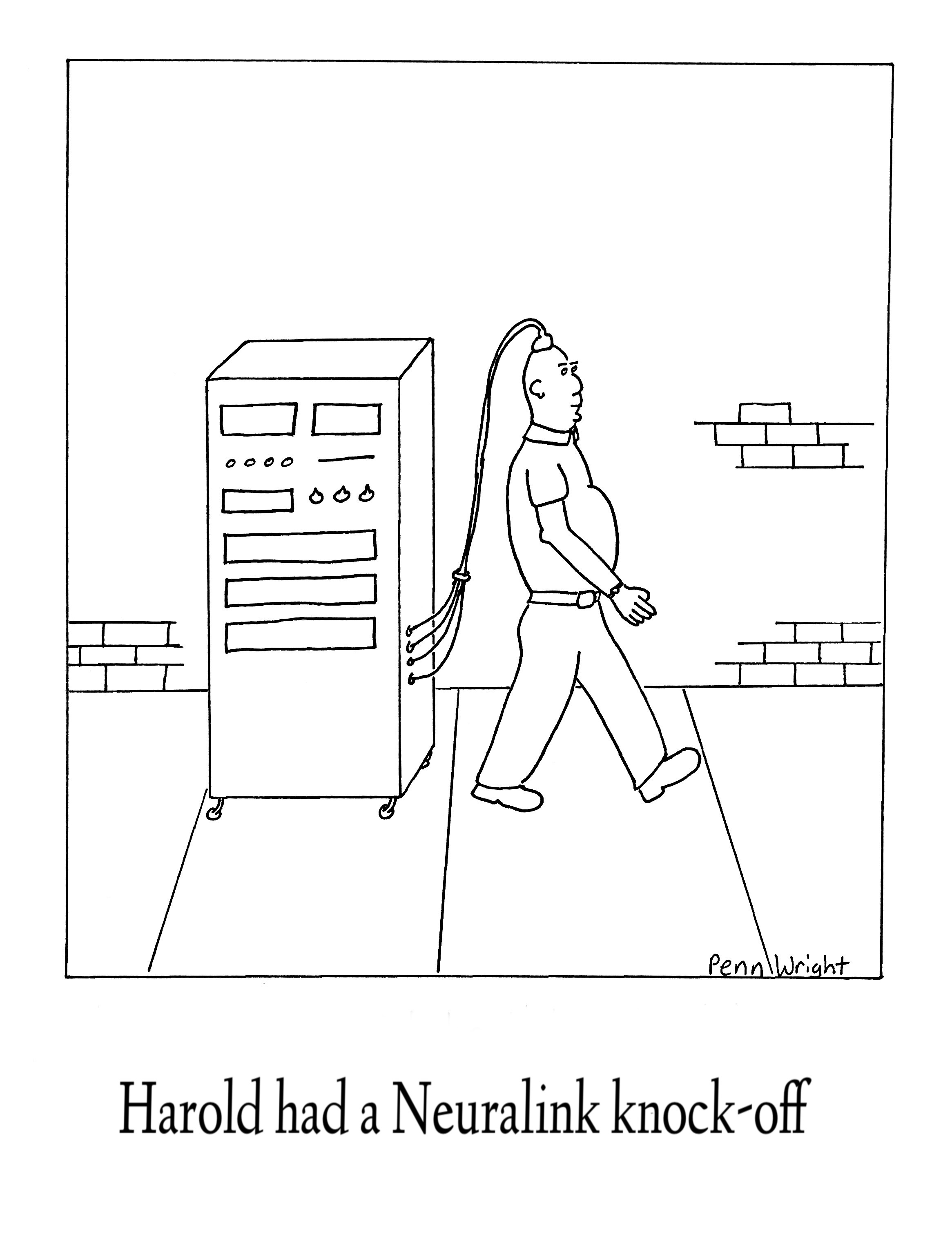The one place you have complete control and safety from the outside world may be under siege. From mind-readers to detectives to your everyday conversation, people have tried to gain access to other people’s thoughts and get in other people’s heads for a long time. And new developments in brain-computer interface technology may provide us with this opportunity.
Is this research of liberating proportions or a nightmare scenario in which we say: Science went too far? Let’s take a look.
Translating Thoughts into Text
Locked-in syndrome or pseudocoma is a condition in which a patient is aware and conscious but cannot move or communicate verbally due to complete paralysis of nearly all voluntary muscles in the body except for vertical eye movements and blinking. Aside from technologies such as Dasher, which help people produce text without a keyboard (in this case through eye tracking), communicating with this affliction is extremely difficult, tedious, and nearly impossible.
But, if you can find a way to tap into and decode brain signals at the root of language understanding and creation, you can tap into someone’s thoughts and possibly their speech.
This was the moonshot goal of a group of University of California researchers and they are showing early success.
What some sources refer to as a “mind-reading machine”, the researchers created a device that registers and analyzes the combination of vowels and consonants we use to construct words and sentences in our brain. Simultaneously, the technology interprets and translates these neural signals into text with over 90% accuracy.
Scientists have understood this neurological process for some time, but have lacked hard research results to show its possibilities.
However, with these positive results, the idea of eventually developing a speech neuroprosthetic that restores communication to individuals with locked-in syndrome or other impairments isn’t that far out of the question.
Since we love to ponder the possibilities here at Quick Theories, what’s the grander outlook of brain-computer interfaces for everyday communication?
Mind-Controlled Computers?
Although it may seem like we “use” our devices. We actually communicate with them. As I type this sentence, my brain gathers my ideas and signals my hands to move over the keys. The computer “listens” to my hand’s movements and displays their actions. If my hands miscommunicate (typo), then the computer replies with a red underline to ask me to clarify.
It’s a basic way of looking at how we communicate with our devices. But, this is how it’s done across all user interfaces. However, using physical actions isn’t the only way to communicate with our devices. The keyboard is just the current interface we use.
The above research shows potential for a new type of interface, where the brain communicates directly with the computer, without the need for our hands to slide over a keyboard.
Elon Musk is one of the visionaries that believes we must merge with software, so we aren’t replaced by software. His Neuralink initiative is one of the few brain-computer interfaces leading the charge.
Imagine you’re in a heated debate with a coworker, but you can’t seem to remember who’s quote you’re trying to reference that’ll demolish his argument. By simply thinking about the quote, your brain-computer interface scours the web and matches the quote with the author and voila! You “remembered”.
Or, you’re in your car and hear an incoming call. But, your phone’s not ringing… it’s your head. That’s right, your calls enter right into Broca’s and Wernicke’s Area (the language centers of the brain) and you’re talking to someone across the country… kind of like telepathy.
So, what’s standing in the way of these crazy possibilities?
In the Way of Brain-Computer Interfaces
One limiting factor of a brain-computer interface like this is filtering out all the noise happening in our brains. At any given moment, dozens of thoughts run through our heads. And most of them aren’t focused on the task at hand.
As I’m trying to search for a wallet on Amazon, I see a bird fly by. The search generated by my brainwaves now includes wallets with bird pictures embossed on them. Not what I’m actually looking for. This shows the pitfall of brain-computer interfaces that they may pick up thoughts we don’t actually want to communicate. Think of all those thoughts that sit in your head that you never say.
Another pitfall is the security of a device connected directly to your brain. The pessimists, realists, and conspiracy-theorists worry that a device like Neuralink could cause “Big brother behavior control”. Tapping into our thoughts and our movement control, they could make us act without our permission. Kind of a dystopian, sci-fi concern. But still a concern.
Only time will tell how the larger market for brain-computer interfaces develops. But, if there’s anything we know for certain, it’s that innovation is driven by NEEDS.
Maybe it’s not for you
Providing communication capabilities to those that are neurologically impaired is the driving force of the aforementioned brain-computer interfaces. It’s an inherent NEED for these folks to live better lives.
As far as connecting your brain to the internet so you can retrieve facts at your leisure, well that’s much more of a WANT. Even though Elon Musk would say otherwise.
So, don’t get lost in this narrative of becoming “one with the machine” in the coming years. You probably aren’t the intended target…
Quick Theories is supported by subscriptions to my Digital Identity series.
This Digital Identity series is an exclusive weekly update to help you adapt to technological change and accelerate your digital intelligence by developing a systematic approach to thinking about, communicating, and protecting your digital identity. This weekly series provides resources for both digital novices and savants plus it can be done from any location. If you love my weekly Quick Theories, you’ll love the Digital Identity series.



It is interesting that you call the moment when you have to search for a device to communicate what you want or are thinking friction. That moment, its steps like waiting to pull out a typewriter or even to get a rock and mark the inside of a cave, is it friction? Does this contribute to the or inhibit the purity of that thought process. What thought process is circulating around that step, how does it accommodate, how does it inhibit this whole process? Is searching for something on the internet truly a par of,t or a contribution to the thought. If all we can do is recall what everyone else says, why bother learning how to articulate for ourselves. Learn and or struggle to learn a language, find its sharp edges, its smooth corners, its power, its promise. Mimicry is a far cry from learning to tie down the huge looming lobsters or for that matter to dip them in butter.
Wiil it be useful for persons recovering from brain stroke ?
Likely already in use for surveillance and mind control / limbic overrides., emf and nano etc.. any tech ‘released’ to the public is probably way more advanced in the private or military sector.
a bit of a distraction maybe? oh look what we ‘;just’ developed. your mouse probably reads your bio signals too. and you mobile phone disables you Hari.
: – )
Amazing! I love your writing skills I am in involved with your post.
Psychology, marketing, sales, propaganda, messaging, poetry – we’ve always sought to know what someone else is feeling or thinking. A BCI makes it easier to detail and simplify. Yet, when I meditate and observe the thoughts and sensations running through my mind, it is a flood of mostly fleeting and trivial concerns, random memories, problem-solving. What’s important are the outcomes, the intentions set before, the decisions and forces causing me to act – or not act.
Excellent prompt here – the closer we get to real-time, instantaneous expression of thought, the more we must trust and understand our complexity and irrationality. Imagine seeing a live stream of a politician during a national debate. We would think them insane. Certain Twitter feeds already come close to this unfiltered, reactive stream of consciousness. James Joyce’s a Portrait of the Artist as a Young Man and later Ulysses have commanded entire dissertations and even literary study careers to understand a single mind’s stream. How could we refine a collective human data stream of thought into something comprehensible?
Testing this signs to tell if you’re being tested with the science
not what I wrote, look for the signs that you are being made to test this subliminal program that àccómpàñieß the miñd machine íé Washington St
What does the thought processer look like.